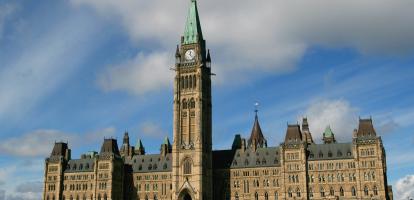The art of calling the start and finish of economic recessions might seem a minor one but it is critical to understanding how policy decisions can affect the economy.
Making such calls is normally a backwards-looking exercise, with business cycle analysts waiting for the accumulation of enough data before they feel comfortable issuing even a nuanced interpretation of whether the economy has reached key points in a cycle. This spring, however, the sheer depth and size of the economic losses stemming from the COVID-19 lockdowns left no room for doubt. The C.D. Howe Institute’s Business Cycle Council was able to declare by May 1 that Canada had entered a recession in the first quarter of 2020 and that the peak of the business cycle had occurred in February.
As we exit lockdowns and the economy starts to turn a corner, when can we say we have exited the recession? This is a much harder question, given the unique context, but still worth investigating, despite considerable uncertainty about potential second waves and possible public health and business responses.
Canadian output fell off a cliff with the onset of COVID-19. GDP fell more than 18 per cent in the two months between the end of February and the end of April. As Canada flattened the curve of the coronavirus and lockdowns were eased, however, employment and output turned around sharply in May and June. From its April low, output grew 4.5 per cent in May and another five per cent in June. Though these are historically strong growth rates they still left Canadian GDP about 10 per cent below its February peak. If growth remains positive, the trough of the recession and its official end will have occurred in April. But how long must growth continue before we can officially declare the end of the recession?
The potential for a second wave of the pandemic and a new round of lockdowns, which we are seeing in a number of countries, makes this question very hard to answer. Growth could be thrown into reverse again and create a “double-dip recession.” A downturn that occurs before GDP returns to its pre-recession peak is commonly seen as part of the same recession.
How long will it take Canadian GDP to return to its February 2020 level? Even without a second wave, the Bank of Canada and the research departments of Canada’s major chartered banks say this won’t happen until around the end of 2021. Twenty months (May 2020 to December 2021) would be the second longest recovery from a recession in Canadian history, behind only the recovery from the Great Depression, which lasted more than six years.
Why will the recovery be slow? Mainly because of the high degree of uncertainty concerning the future course of the pandemic. With the cloud of another lockdown hanging over their heads, businesses will be hesitant to invest heavily in structures and capital equipment. Households, fearing another possible round of layoffs, will more than likely continue to delay big-ticket purchases. And some sectors, like the restaurant, travel, tourism and live entertainment industries, have suffered such damage that resources they had previously employed may have to be permanently shut down or redeployed to other sectors of the economy. If the recovery is so weak that growth turns negative late in 2021, before GDP is back to its February 2020 peak, business cycle analysts will have to make a call about whether to label it a new recession or part of the old one.
The good news is that the recovery is clearly underway and, if it is sustained, this recession will be the shortest on record, just two months from peak to trough. Policy-makers should begin thinking of ways to keep recovery going rather than focusing only on bridging people and businesses through the crisis — while keeping in the back of their minds the real possibility of economic backtracking.
People have faced many hardships as a result of the deepest recession since the Second World War in terms of the fall in GDP from peak to trough. Understanding where we sit in the business cycle is important for policy-makers as they navigate an uncertain recovery. The news lately has been encouraging. Let’s do our best to ensure it stays that way.
Published in the Financial Post
Jeremy Kronick is associate director of research at the C.D. Howe Institute, where Farah Omran is a policy analyst and Steve Ambler is David Dodge Chair in Monetary Policy. Ambler is also a professor of economics at the École des sciences de la gestion, Université du Québec à Montréal.





